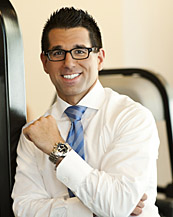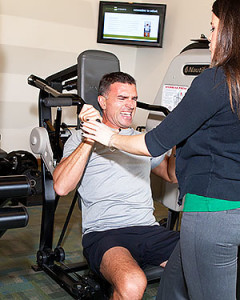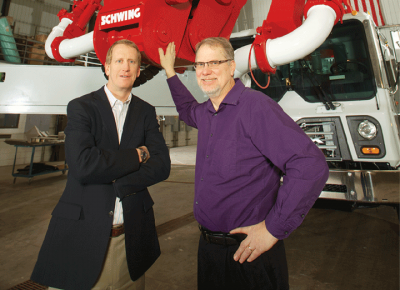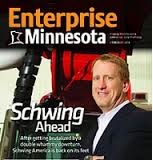Leadership Catalyst Blog

Exercise Mythbusters for Vistage CEOs
Motivation / 09.03.2016
I meet with over 70 CEOs, Business owners, and executives every month in the four Vistage CEO private advisory boards I lead. Most of the CEOs in my groups understand the importance of regular exercise for keeping them at the top of their games, however, a majority of them, including myself, have bought into several myths about how to exercise. Many CEOS made New Year’s resolutions about improving their health, but like most of us, have fallen off of their good intentions 30 days into the new year. Some of the CEOS who have been successful in developing a discipline of exercising daily don’t realize that they are wasting a lot of precious time due to fitness myths, and they are being counterproductive in their efforts.
 Luke Carlson is a Vistage member and speaker, exercise physiologist, former NFL strength coach, competitive marathoner, and one of the most respected experts in evidence based resistance exercise. Luke recently met with my Vistage groups to help us dispel some fitness myths and design an intelligent exercise program that would require no more than two 30-minute exercise sessions a week. I have worked with Luke to outline a few of the most dangerous myths below.
Luke Carlson is a Vistage member and speaker, exercise physiologist, former NFL strength coach, competitive marathoner, and one of the most respected experts in evidence based resistance exercise. Luke recently met with my Vistage groups to help us dispel some fitness myths and design an intelligent exercise program that would require no more than two 30-minute exercise sessions a week. I have worked with Luke to outline a few of the most dangerous myths below.
Myth 1. “Cardio” is the key to weight loss.
Mythbuster 1. If your goal is weight loss, the most effective approach is always a combination of improving your eating habits and then recharging your metabolism by increasing muscle mass via strength training.
Go to any health club and you will see scores of people laboring on treadmills, elliptical machines, and spin bikes. Ask them what their goal or objective is and they will tell you that they are trying to burn calories or lose weight. What they fail to understand is that while they are burning more calories during the one-hour that they are exercising, their body is actually burning fewer calories for the remaining 23 hours of the day following their workout. The reason? After we perform a bout of cardio or aerobic exercise, the number of calories we burn the remainder of the day, known as Energy Expenditure due to Physical Activity or simply “EEPA” decreases. Stated otherwise, after we perform a bout of cardio, we find a way, both consciously and subconsciously to be less active and expend less calories the rest of the day. In controlled experiments, subjects who exercise 60-minutes per day expend no more calories at the end of the day compared with subjects who perform no cardio whatsoever.
 Don’t believe it? Here is another factoid: People who train for and then run a marathon (often with a hidden intent to lose weight), despite hundreds of hours of running (and literally tens of thousands of calories expended), on average, end up weighing the same or more on the day of the marathon compared to before they started their training. Additionally, they fail to improve their body fat percentage. This is in no way denigrating cardio. Instead, we simply need to understand that cardio isn’t very effective for weight loss; the primary benefit of cardio is improving your cardiovascular system and health, as its name suggests.
Don’t believe it? Here is another factoid: People who train for and then run a marathon (often with a hidden intent to lose weight), despite hundreds of hours of running (and literally tens of thousands of calories expended), on average, end up weighing the same or more on the day of the marathon compared to before they started their training. Additionally, they fail to improve their body fat percentage. This is in no way denigrating cardio. Instead, we simply need to understand that cardio isn’t very effective for weight loss; the primary benefit of cardio is improving your cardiovascular system and health, as its name suggests.
Myth 2. The best way to increase muscle mass and muscle strength is by strength training several times a week.
Mythbuster 2 Doing resistance training more than twice a week will generally slow your results, and for most executives, you will get 85% of the benefit doing resistance training only once per week.
We reap the many benefits of strength training not during the training session itself, but during the recovery from the training session. The training session should be viewed as the stimulus, and in order to respond to the stimulus, we need to make sure we provide adequate rest and recovery. As Luke explained, building strength is similar to building a callus. If you rub a spot on the back of your hand with a piece of sandpaper every few days, you will soon build up a callus (the callus is a response to a stimulus). If you were to rub your hand too frequently, you will gain a blister rather than a callus. It is often our fervor for producing better results that impedes our progress. With strength training, less is more.
 Myth 3. The best way to increase your strength is to perform three sets for each exercise.
Myth 3. The best way to increase your strength is to perform three sets for each exercise.
Mythbuster 3. One properly performed set of each exercise will stimulate all of the health and muscle building benefits of strength training.
Muscles can’t count, so it doesn’t matter if you end up with 7 reps or 17 reps; instead, focus on continuing each set to the point of “momentary muscle failure”; the point where another perfect rep can’t be performed. The main focus should be to lift and lower the weight slowly, thus eliminating momentum. This makes the exercise more effective as it maximizes the tension on your muscles while also making the exercise safe because the forces your joints are exposed to are minimized.
Luke Carlson’s exercise prescription for the busy executive:
- Strength train once or at most twice per week, with each workout consisting of one set of 8-12 exercises done to momentary mujscle failure and lasting approximately 30 minutes.
- Strength train once or at most twice per week, with each workout consisting of one set of 8-12 exercises done to momentary mujscle failure and lasting approximately 30 minutes.
- Perform one to two high intensity interval cardio training sessions per week, with each session lasting 30 minutes. You can walk/run or use an elliptical, bike or treadmill. Warm up for 5 minutes and then do 10 two minute intervals where you exercise as hard as you can for 30 seconds and then rest for 90 seconds. As your conditioning improves, exercise as hard as you can for 1 minute and then rest for 1 minute. The key to improving over time is to keep increasing the intensity of your workouts by increasing your speed, the incline of your treadmill, or the resistance of your elliptical. Finish off your workout with 5 minutes of light exercise or cool down
- Lead an active lifestyle and do activities you enjoy and consider leisure rather than “working out.” It can be biking, walking, golfing, or playing with the kids. The key is that it shouldn’t feel like a chore. If you love to run or jog, do it.
- This total time commitment of 1-2 hours of focused, intense exercise per week and an active lifestyle will maximize fitness, stimulate a myriad of health benefits, and bolster an executive’s performance.
Luke’s Mythbusters have inspired myself and eight of my Vistage members and several of their spouses to try out his methodology at the Discover Strength gym. We have been pleased with the results thus far and we are spending the extra time previously devoted to the treadmill with our families and friends.
Read More >>
New Ammunition in the Twin Cities War for Talent
All Blog Posts, Talent Acquisition, Talent Management / 10.03.2015
For decades recruiters have known that it is really hard to get people to move to the twin cities but that once they do it’s impossible to get them to leave. An article in the March 2015 issue of the Atlantic entitled “The Miracle of Minneapolis” penned by Derek Thompson highlights a compelling economic reason behind this adage: no other city mixes affordability, opportunity, and wealth so well.
Minneapolis – St. Paul was one of only three major metro areas to be on two top 10 economic lists that recently came out. The first is a Trulia study that looked at homeowners’ monthly payments in each city relative to the areas median income. The second a Harvard-Berkeley study examining which cities have the highest intergenerational mobility. Many metropolitan areas seem to have caused a trap for their younger residents in which they cannot afford housing and find a job that positions them well for the future. The Twin Cities seems to have realized both affordable housing and upward job mobility.
Other top ten lists that the Twin Cities makes such as the most bike friendly city, Money’s best place to live, and most fit city are just icing on the cake. The fact that young families can come here for great careers and affordable housing is very compelling value proposition for millennials and this article is a great arrow in your quiver for attracting top talent.
How has the Twin Cities done this and continued to make its mark as a strong business friendly region? According to Thompson, “The Twin Cities’ housing and tax-sharing policies have resulted in lots of good neighborhoods with good schools that are affordable for young graduates and remain nice to live in even as their paychecks rise. This, in turn, has nurtured a deep bench of 30- and 40-something managers, who support the growth of large companies, and whose taxes flow to poorer neighborhoods, where families have relatively good odds of moving into the middle class.”
A fact often touted in the region is that the Twin Cities has more Fortune 500 companies per capita than any other metropolitan area. One strong reason for this is the deep blend of 30 and 40 something talented middle managers that help build and grow those companies.
As you recruit out of state talent for your business, let them know that the Twin Cities, along with your company, is a place that grows, fosters and retains talent like no place else.
Read More >>
Women are now fairly well represented in the corporate middle management ranks, but there is still a glaring gap when it comes to women in top business leadership roles. One of the most frequent reasons cited is that women hit the “pause button” on their career advancement while they focus more of their energy on raising their families. While that is true for many, I’d like to explore a few of the theories regarding why there are not more women at the top and what it would take to change the paradigm.
In a TED talk entitled “The Career Advice you Probably Didn’t Get,” leadership expert Susan Colantuono contrasts the development plans of male vs female middle managers who are being prepared to take the next step in their career. A key difference that she points out is that men are being coached and trained on how to run the business (Strategic, Financial and Business Acumen) while women are being coached and trained on leadership and interpersonal skills. Leadership and interpersonal skills are important, particularly at the middle management level, but they are not enough for success at the top of the organization.
Colantuono defines strategic, financial and business acumen as “the skill set that has to do with understanding where the organization is going, what its strategy is, what financial targets it has in place, and understanding your role in moving the organization forward.” It is assumed that anyone in the running for a top management role embodies this skill set, but Colantuano points to this critical arena as the missing 33 percent of the career success equation for women. Her argument is not that women aren’t capable of excelling at strategic, financial and business acumen, but rather that the career advice and coaching that women are being given does not emphasize the importance of boldly and consistently demonstrating mastery of this essential skill set. Colantuono encourages women to seek out opportunities to showcase their strategic, financial and business acumen in their roles and to highlight these accomplishments when being considered for advancement opportunities.
Well known TV news personalities Claire Shipman and Katty Kay wrote an article in The Atlantic called The Confidence Gap addressing the disparity in career success between genders. They argue that confidence matters as much as competence in career advancement, and they point to evidence that suggests women are generally less self-assured than men. The authors highlight examples of extremely talented and credentialed famous women who despite their success, exhibit self-doubt when reminiscing about key moments in their careers. Shipman and Kay believe that the way for women to become more confident is to stop thinking so much and just act, a thought and behavior pattern which will become more ingrained over time with neuro plasticity.
I have a slightly different interpretation of what Shipman and Kay label “The Confidence Gap”. The Atlantic article talks about how women often lack the confidence to put themselves in risky or stretch business leadership roles. The authors label it as self-confidence, but to me it seems more like women holding themselves to a higher standard than men. By that I mean that in some cases, women seem to be more literal when assessing themselves against posted job requirements. A man may look at a list of job requirements and confidently apply if he meets half of them — An equally competent woman may be more likely to feel that she has to have all of the boxes checked to apply and be successful, which may not be the case.
Closing the Gender Gap
Organizations, leaders, and women need to understand that the Critical Success Factors for advancing to top executive positions are different than those required for excelling in middle management positions. The old adage that “What got you here won’t get you there” is especially true for making it to the top of organizations. Here are three ways we can help close the gender gap.
- Make sure the development plans of high performing women with high potential focus on building strategic, financial, and business acumen.
- Encourage high potential women to post for internal positions that they view as a stretch for themselves, even when they feel they don’t meet all of the requirements.
- Place high potential women in Vistage Private Advisory Boards. Investing one day a month with talented men and women from other companies to work “on the business” rather than just working “in the business” will not only improve their strategic and business acumen, it will increase their confidence and help them become better leaders, make better decisions, and get better results.
As a Vistage Chair, I am deeply committed to helping close the gender gap at the top. That is why my Vistage practice has more women members than any other chair practice in town, and why I am actively recruiting and mentoring women to become Vistage Chairs. If you would like to join me as a member or a fellow chair, please call me at 612.877.1234 or email me at Brian.Davis@vistagechair.com
Read More >>
Schwing USA charges back – 10 Lessons for leveraging Chapter 11
All Blog Posts, Change, Strategy / 19.03.2014
A hallmark of an effective CEO Peer Group is having members with a diverse set of experiences. A CEO mix featuring a variety of industries, company sizes, and life cycle maturity stages creates a brilliant wealth of knowledge that members can draw on to assist in whatever challenges they are currently facing. As some Vistage members have quipped, it’s nice to have the opportunity to learn from someone else’s mistakes rather than to make them all yourself.
My Minneapolis Vistage groups include several Fast50 members, a Power50 member, the 2013 Manufacturer of the Year and a perennial “Best Place to Work” winner. CEOs are going to have a lot of ups and downs in their careers just like anyone else, and CEOs need a forumthat can help us through the bad times as well as the good. Our CEO Advisory Board is fortunate to include Brian Hazeltine, CEO of Schwing America, who was featured last month on the cover of Enterprise Minnesota for leading his company back from the brink of financial ruin.
Read Schwing Ahead in the February issue of Enterprise Minnesota® magazine.
As Lynn Shelton, Enterprise Minnesota’s Director of Marketing & Communications, writes in their February 21,2014 e-Trends newsletter:
“In September 2009, just two weeks after taking over as CEO, Hazelton brought the company into Chapter 11 bankruptcy protection, just one more move in what our profile called “an almost surreal litany of recession-related poor timing and bad luck that forced the nation’s leading manufacturer of concrete pumps to spend more than four years in a corporate bob and weave,” waiting for the housing industry to bounce back.”
During the housing boom ten years ago Schwing was racing to keep up with demand. At its peak, Schwing grew to 680 employees and ran its 400,000 square-foot facility in White Bear Township 24/7. When the construction industry bottomed out, Schwing had to lay off close to 600 employees and close its in-house paint operation, welding shop and fabrication facility. The story of how Hazelton and his team nimbly managed through, creatively leveraging the Schwing brand and keeping close to its customers (who were also enduring a difficult time) is an inspiration.
Here are few key lessons Brian Hazelton of my Minnesota Vistage group can teach us about surviving a “perfect storm” and repositioning his company to thrive and double next year.
1) Believe in your product strongly enough to fight for it even when the universe seems to be turning against you
2) Beware of unrelated but compounding converging trends
3) When there is a will there is a way – the drive to survive can move mountains
4) Be willing to take on multiple jobs when times are tough
5) Don’t be afraid to reinvent yourself
6) While Chapter 11 is nobody’s first choice, it can be the best strategic option when you are not left with many paths forward
7) Don’t forget about your customers even when they aren’t buying
8) Help your customers sell your product
9) If you don’t tell your story when times are tough, somebody else will and odds are you won’t like their version as well
10) Paying it forward can bring about payback – loyalty is a form of Karma
Read More >>
Lessons in Leadership Legacies via Peyton Manning and Shaun White
Motivation, Vistage Peer Groups / 13.02.2014
Many of us were disappointed in the quality of the 2014 Super Bowl Game, but undoubtedly none more so than Bronco’s quarterback Peyton Manning. Common sense says it’s not fair to judge a career by one event, but popular culture seems programmed to only remember the big wins and losses. The real legacy can get lost; namely the often invisible influence and impact one’s action and character had on others throughout the career.
A fan who understands what legacy is really all about out reached out to Manning through a letter in the Denver Post. Laurie Lattimore-Volkmann shares, why Manning’s legacy was secure well before Sunday’s game. Click here for the one page letter written from the perspective of a mother and a life-long Broncos fan.
Shaun White won back to back half pipe snowboarding gold medals in the Torino and Vancouver Olympics and he was the favorite coming into yesterday’s finals in Sochi. White ended up finishing just off the podium in 4th place, but he was gracious as ever in congratulating the winner. Kare11 just ran a neat story that illustrates the profound impact that Shaun White has had on a local Twin Cities boy. White’s 4th place finish in Sochi will make him no less of a hero in Jet’s eyes.
Take a moment to reflect on your legacy as a leader in your company. What would your people say about you? What one thing would you like to change starting today?
Read More >>CEOs in my Vistage Peer Group candidly reveal the impact the group has had on their businesses
All Blog Posts, Vistage Peer Groups / 13.02.2012
A little over a year ago, I submitted a post citing research that Vistage CEOs outperformed their non-member peers. (http://theleadershipcatalyst.wordpress.com/2010/10/31/research-backs-claims-that-vistage-ceos-outperform-their-nonmember-peers). The bottom line of that article was that
“… in one of the toughest economies in history, Vistage member companies averaged 5.8 % revenue growth, while nonmembers averaged a (9.2%) revenue decline. In future posts, we will explore the factors that contribute to that sizeable performance difference.”
The purpose of today’s post is to make good on that promise. Most of the CEOs who have been in the Vistage Peer Group that I chair have seen significant improvements in their business since they joined. Our group currently has 18 members from a diverse set of industries and backgrounds and businesses that range in size from $5M to over $800M in annual revenues. To better understand how belonging to Vistage increased their effectiveness and enhanced their lives, I took a little flip camera to one of our monthly executive coaching sessions and asked them. (To see all 12 videos, click on the CEO VIDEOS tab at the top of the page.)
For purposes of this blog post, I selected the responses of 3 CEOs from varying company sizes, industries, and business models. Some were struggling a year ago, and others were doing well. All are doing better now and point to their Vistage membership as a key factor in their successes. Below is a brief outline of their situations and links to their 2 minute YouTube videos where they share how Vistage made a difference.
Gene Earhart is the CEO of Wellington Security Systems, a small family business (< $5M) he owns and operates in partnership with his brother-in-law. Gene is a lifelong entrepreneur, who decided to start this business with his family before finishing college. His company designs, installs, and services electronic security systems for the commercial market, and they have 10 employees in a single location. He credits Vistage with helping him turnaround his company to achieve the most profitable year in their 30-year history.
Click here to see a 2 minute YouTube video of Gene telling his story.
Mike Martin is the CEO and owner of Carlson & Stewart Refrigeration ($10 – $25M), which designs, installs, and services industrial and commercial refrigeration systems. An engineer by training, he has worked most of his career at his company, and bought it and became CEO about 8 years ago. Based in Marshall MN, he has about 50 employees in 3 locations in Minnesota and South Dakota. He says that he would not have been able to double the size of his business last year without Vistage.
See Mike’s 2 minute YouTube video by clicking here.
Jim Fisher is the CEO of Midwest Sign, a privately owned business ($100M+) that distributes sign making equipment and supplies. They have about 200 employees in 9 locations throughout the western half of the U.S.. Jim is trained as an accountant, and has spent most of his Career with Midwest. He was thrust into the CEO position about 5 years ago with the sudden and unexpected death of the beloved company owner and founder. After being pounded by the recession, he and his team have hit the restart button on their growth engine, and last year they achieved double-digit growth and record profitability. He points to Vistage as helping him become more strategic, getting him more on top of the business, and showing him how to get a lot more done in less time.
Click here to see more about how Vistage has helped Jim elevate his game as a CEO.
A key theme that cuts across all of these stories is that “None of us is as smart as all of us”. Having an advisory board of fellow CEOs that have your back and challenge your thinking is a tremendous competitive advantage.
Read More >>How to Increase Accountability
All Blog Posts, Coaching, Performance Management, Vistage Peer Groups / 22.11.20111 comments
In a recent Vistage meeting, a theme that emerged was how to better hold others accountable. People often agree in meetings to things with “their fingers crossed”, and don’t deliver on commitments. While this is the subject of many books and training programs, one quick fix is to assure that you have a “Level 5” agreement.
James Newton, CEO of Newton Learning corporation and longtime Vistage Speaker, outlines 5 levels of agreement. Below is a brief description of each agreement level, illustrated by a simple example of setting up a golf game. As you read the scenarios, consider the level of agreement you have achieved in those instances where people have not delivered on commitments.
Level 1 Agreement: No agreement at all.
Brian: “Hey Mike, what do you say we play golf after our next meeting.”
Mike: “There’s an idea.”
Level 2 Agreement: Likes the idea, but no agreement.
Brian: “Hey Mike, let’s play golf after our next meeting.”
Mike: “Good idea!”
Level 3 Agreement: Reluctant agreement–but no commitment to do anything.
Brian: “Mike, Let’s play golf after our next meeting.”
Mike: “Man, I am really swamped, I better not.”
Brian: “Come on Mike, this will probably be our last chance before snowfall.”
Mike: “OK, I’m in.”
Level 4 Agreement: Enthusiastic agreement–but no commitment to do anything.
Brian: “Mike, let’s play golf after our next meeting”
Mike: “Great idea! Count me in.”
Level 5 Agreement: Specific commitment of who is going to do what by when, stated by the accountable person.
Brian: “Mike, let’s play golf after our next meeting”
Mike: “Great idea!” I’m in.”
Brian: “Where do you want to play.”
Mike: “Let’s play at my club. I’ll make a tee time for after our meeting.”
Brian: “How about if we have our meeting at your club so we can tee off right after that.”
Mike: “Great, I’ll meet you at my club for our monthly one-to-one on Friday at 2:00 pm and make a tee time for 3:30 pm.”
♦♦♦♦♦♦♦♦♦♦♦♦♦♦♦♦♦♦♦♦♦♦♦♦♦♦♦♦♦♦♦♦♦♦♦♦ LEADERSHIP CATALYST TIP ♦♦♦♦♦♦♦♦♦♦♦♦♦♦♦♦♦♦♦♦♦♦♦♦♦♦♦♦♦♦♦♦♦♦♦
Accountability increases with the level of agreement. If you are having trouble holding people accountable, push for a Level 5 Agreement, with a specific commitment to what is going to get done, by whom, and by when that is stated by the accountable person. It may take a little longer, but it will increase accountability and execution–and will save you a lot of time in the long run.
♦♦♦♦♦♦♦♦♦♦♦♦♦♦♦♦♦♦♦♦♦♦♦♦♦♦♦♦♦♦♦♦♦♦♦♦♦♦♦♦♦♦♦♦♦♦♦♦♦♦♦♦♦♦♦♦♦♦♦♦♦♦♦♦♦♦♦♦♦♦♦♦♦♦♦♦♦♦♦♦♦♦♦♦♦♦♦♦♦♦♦♦♦♦♦♦♦♦♦♦
A Death in Cupertino | The Right Kind of Tyrant
All Blog Posts, Motivation, Vistage Peer Groups / 11.10.2011
“ Remembering that I’ll be dead soon is the most important tool I’ve ever encountered to help me make the big choices in life; because almost everything —all external expectations, all pride, all fear of embarrassment or failure — these things just fall away in the face of death, leaving only what is truly important. Remembering that you are going to die is the best way I know to avoid the trap of thinking you have something to lose.
You are already naked. There is no reason not to follow your heart.”
Steve Jobs
1955-2011
Founder and CEO of Apple
From his Stanford University Commencement Address, 2005
Picking an article to share with you about the passing of Steve Jobs is an impossible task with so many that knew him sharing their impressions on one of the most important entrepreneurs in history.
We have a saying in Vistage: “We invite CEOs to our group but human beings show up.” To get a sense of what was important to this truly remarkable and essestial human being, I’d like to share with you the 15 minute video of his 2005 Stanford Commencement speech. I found it incredibly inspirational, and I hope you will share it with your friends, family and employees.
This inspiring speech, however, should not blind us to the fact that Steve Job’s management style was often very different from the warm, fuzzy and friendly feeling you get from using his products or visiting the Apple store at the mall. For some insights into the management style that made Apple the most valuable company in America, check out this article which suggests that if Steve Jobs was often a hard man to work for, he was, in fact, “The Right Kind of Tyrant.”
Thanks, Steve, for all you have given us. Rest in Peace
Jay Cutler of the Chicago Bears created a lot of controversy last week when a knee injury prevented him from finishing the NFC conference championship game against the Green Bay Packers. Many questioned his toughness, and believed he had “quit on his team” during their most important game of the year.
An MRI later showed the injury was indeed serious, and confirmed the decision for him not to play. It did not, however, excuse the lack of leadership and poor attitude he displayed during the remainder of the game. Instead of cheering on his teammates or supporting the backup quarterbacks, cameras repeatedly caught him sulking on the sidelines, listening to his iPod.
The lesson for CEOs is that, like Jay Cutler, we are always “on camera” in our organizations. We need to periodically check ourselves to make sure we haven’t succumbed to bad leadership habits and make sure that we aren’t displaying a poor attitude, which can be contagious for the rest of our organization.
Mike Myatt makes a compelling case that attitude reflects leadership and is a decision.
“Show me a CEO with a bad attitude and I’ll show you a poor leader. While this sounds simple enough at face value, I have consistently found that one of the most often overlooked leadership attributes is that of a positive attitude. As a CEO, how can you expect to inspire, motivate, engender confidence, and to lead with a lousy attitude? The simple answer is that you can’t…it just won’t work. CEOs with bad attitudes will not only fail to engage their workforce, but they will quickly find themselves shown the door as their attitude’s impact on performance becomes visible to the board.”
Do you need an attitude adjustment? Click here for a 5 point checklist to check yourself, and some compelling statistics about why you may want to change.
Read More >>Algebraic Proof that Tubby Smith’s Gophers became the Best Team in the Country after working with a Leadership Catalyst!
All Blog Posts, Change, Coaching, Motivation, Team Building / 02.04.2010
On March 1st, I posted a blog about Tubby Smith bringing in a Leadership Catalyst (sports psychologist) after winning only 3 of 10 Big Ten games. On the eve of the final four, it’s time to assess whether the team really improved after that.
The gophers showed dramatic improvement, winning 7 of their last 10 conference games. They ended up beating every Big Ten team making the NCAA tournament, including impressive wins in the Big Ten Tournament against #11 MSU and #6 Purdue, which won the gophers their own invitation to the “Big Dance”. They were the only team in the nation to beat two of the Final Four teams (Butler and MSU) and beat teams that beat Duke (Wisconsin) and beat West Virginia (Purdue). According to the Algebraic Transitive Property of Inequalities (see proof below), that makes the Gophers the best team in the nation.
There you have it – mathematical (and tongue in cheek) proof that the Gophers are #1.
Congratulations Tubby, on your 17th consecutive 20 win season (21W – 14L)!
♦♦♦♦♦♦♦♦♦♦♦♦♦♦♦♦♦♦♦♦♦♦♦♦♦♦♦♦♦♦♦♦♦♦♦ LEADERSHIP CATALYST TIPS ♦♦♦♦♦♦♦♦♦♦♦♦♦♦♦♦♦♦♦♦♦♦♦♦♦♦♦♦♦♦♦♦♦♦♦
According to the Transitive Property of Inequalities,
If a < b and b < c, then a < c
Likewise:
If a > b and b > c, then a > c
If Minnesota > Wisconsin and Wisconsin > Duke, then Minnesota > Duke
If Minnesota > Purdue, and Purdue > West Virginia, then Minnesota > West Virginia
Minnesota > Butler
Minnesota > Michigan State
Therefore,
Minnesota > All Final Four Teams
♦♦♦♦♦♦♦♦♦♦♦♦♦♦♦♦♦♦♦♦♦♦♦♦♦♦♦♦♦♦♦♦♦♦♦♦♦♦♦♦♦♦♦♦♦♦♦♦♦♦♦♦♦♦♦♦♦♦♦♦♦♦♦♦♦♦♦♦♦♦♦♦♦♦♦♦♦♦♦♦♦♦♦♦♦♦♦♦♦♦♦♦♦♦♦♦♦♦
Why Can’t Executives Agree on their High Potential Talent?
Assessment, High Potential Programs, Succession Planning, Talent Management / 21.03.2010

Heated Talent Review
In many of the talent review discussions I have facilitated at the top of organizations, I have been struck by how difficult it is for leadership teams to agree on who at one or two levels level below them are their best bets for the future. Often times it is because they are all using their own definitions of potential. Some are touting the results their candidates achieve, while others focus on the leadership behaviors theirs exhibit. Some highlight their candidate’s ability to see the big picture and handle complexity while others emphasize the experiences their candidates have had to prepare them for the next role. So who is right? All of them! But until they start making “apples to apples” comparisons, little progress will be made in these discussions.
When facilitating talent discussions, it is much easier to come to agreement if you clearly define the four aspects of talent that need to be assessed and discussed (see below). Then compare your candidates on each of these aspects so you can agree on both the strengths and the gaps of each candidate. Otherwise, it is like trying to agree on which person is bigger, when one is measuring height and another is measuring weight.
♦♦♦♦♦♦♦♦♦♦♦♦♦♦♦♦♦♦♦♦♦♦♦♦♦♦♦♦♦♦♦♦♦♦♦ LEADERSHIP CATALYST TIPS ♦♦♦♦♦♦♦♦♦♦♦♦♦♦♦♦♦♦♦♦♦♦♦♦♦♦♦♦♦♦♦♦♦♦♦
To foster more productive talent review discussions, install a common language for assessing and discussing talent using the following four definitions:
- Performance—The extent to which the person achieved their objectives (“The What”) and demonstrated the appropriate leadership behaviors. (“The How”). Most agree that both are important and neither is sufficient for sustainable performance.
- Potential—A person’s capacity to be a top performer in a more senior role. Do they have the mental horsepower to handle the greater complexity, the emotional intelligence to lead and influence others, the adaptability to manage change and handle stress, and the learning agility to learn from experience?
- Readiness—The extent to which a person has had the experiences necessary to mold their raw potential into the capabilities required to handle the additional challenges and responsibilities at the next level.
- Fit—The extent to which a person is a good fit for the organization’s culture, leadership team, and current business situation.
Next Monday: How do you communicate to your High Potentials?
♦♦♦♦♦♦♦♦♦♦♦♦♦♦♦♦♦♦♦♦♦♦♦♦♦♦♦♦♦♦♦♦♦♦♦♦♦♦♦♦♦♦♦♦♦♦♦♦♦♦♦♦♦♦♦♦♦♦♦♦♦♦♦♦♦♦♦♦♦♦♦♦♦♦♦♦♦♦♦♦♦♦♦♦♦♦♦♦♦♦♦♦♦♦♦♦♦♦
Read More >>Is your high potential leadership program on the “Fast Track to Failure”?
All Blog Posts, High Potential Programs, Leadership Development, Succession Planning, Talent Management / 14.03.20102 comments
Most corporations are worrying about how to accelerate the development of successors for the expected exodus of “baby boomer” executives. While the impact of the financial crisis on most 401k plans may have delayed this exodus, the demographics haven’t changed, and within 5 to 10 years, a huge number of senior leaders will need to be replaced.
In working with dozens of companies on succession management and leadership acceleration programs, I have found that most are focusing almost exclusively on the organizational side of the equation—How to identify leaders with high potential (HIPOs) and then accelerate their readiness to step into the next role. Seldom, however, is enough attention paid to the individual side of the equation. The underlying assumption is that being tapped as a high potential is a huge benefit to the individual, and the individual’s aspirations as well as the significant downsides of being labeled a “HIPO” often are ignored.
Bottger and Barsoux of INSEAD spell out some of these potential hazards to HIPOs in their brief article entitled “Fast Track to Failure” in last month’s Conference Board Review. It is an open letter to newly anointed HIPOs, warning them of 4 inherent traps that can derail the most promising of careers, and well worth a quick read.
♦♦♦♦♦♦♦♦♦♦♦♦♦♦♦♦♦♦♦♦♦♦♦♦♦♦♦♦♦♦♦♦♦♦♦ LEADERSHIP CATALYST TIPS ♦♦♦♦♦♦♦♦♦♦♦♦♦♦♦♦♦♦♦♦♦♦♦♦♦♦♦♦♦♦♦♦♦♦♦
To make sure your high potential leadership program is on the fast track to success:
- Clearly define what is meant by “potential” vs. “performance” or “readiness”
- Accurately measure potential
- Make high performance a requisite for becoming and remaining a “HIPO”
- Avoid labeling people as “High Potential” too early
- Make sure you are having the right conversations with HIPOs so they know they are valued and to assure your expectations are in line with their aspirations.
- Accelerate their readiness through feedback, coaching, and action learning teams
I will expand on each of these in my future Monday morning blog posts.
♦♦♦♦♦♦♦♦♦♦♦♦♦♦♦♦♦♦♦♦♦♦♦♦♦♦♦♦♦♦♦♦♦♦♦♦♦♦♦♦♦♦♦♦♦♦♦♦♦♦♦♦♦♦♦♦♦♦♦♦♦♦♦♦♦♦♦♦♦♦♦♦♦♦♦♦♦♦♦♦♦♦♦♦♦♦♦♦♦♦♦♦♦♦♦♦♦♦
Read More >>Toyota and GM: Getting Bigger at the Expense of Getting Better?
All Blog Posts, Business, Strategy / 05.03.2010
 The February 24th edition of Economist Magazine ran an article entitled “The Machine that ran too hot: The woes of Toyota, the world’s biggest car company, are a warning to rivals.” In the article, James Womack, one of the authors of “The Machine that Changed the World”, a book about Toyota’s innovations in manufacturing, dates the origin of its present woes to 2002, when it set itself the goal of raising its global market share from 11% to 15%. Mr. Womack says that the 15% target was “totally irrelevant to any customer” and was “just driven by ego”. In other words,, Toyota got itself in trouble when quality became subordinate to another goal: Selling more cars than GM.
The February 24th edition of Economist Magazine ran an article entitled “The Machine that ran too hot: The woes of Toyota, the world’s biggest car company, are a warning to rivals.” In the article, James Womack, one of the authors of “The Machine that Changed the World”, a book about Toyota’s innovations in manufacturing, dates the origin of its present woes to 2002, when it set itself the goal of raising its global market share from 11% to 15%. Mr. Womack says that the 15% target was “totally irrelevant to any customer” and was “just driven by ego”. In other words,, Toyota got itself in trouble when quality became subordinate to another goal: Selling more cars than GM.
GM apparently is not heeding the warning. WSJ reported on March 3rd “Feeling Heat From Ford, GM Reshuffles Managers“. Ford’s February monthly U.S. sales surpassed GM’s for the first time in 50 years. Hours after the sales results were released, GM announced its second executive shuffle in three months. It appears as though GM is falling into the same trap as Toyota did when it shifted it’s priority from safety and customer satisfaction to surpassing its rival in sales. As Toyota and others (Merck, Motorola, HP) have shown, doing so can lead to their downfall.
♦♦♦♦♦♦♦♦♦♦♦♦♦♦♦♦♦♦♦♦♦♦♦♦♦♦♦♦♦♦♦♦♦♦♦ LEADERSHIP CATALYST TIPS ♦♦♦♦♦♦♦♦♦♦♦♦♦♦♦♦♦♦♦♦♦♦♦♦♦♦♦♦♦♦♦♦♦♦♦
Don’t focus on getting bigger at the expense of getting better.
- Increasing scale should not be seen as the end goal, but rather as an outcome of pursuing your core purpose.
- Great leaders pursue growth in performance, distinctive difference, creativity and people, knowing sales growth will follow.
- Focusing on a noble core purpose and growth in this way will engage the hearts and minds of your people in a way that financial BHAGs never will.
♦♦♦♦♦♦♦♦♦♦♦♦♦♦♦♦♦♦♦♦♦♦♦♦♦♦♦♦♦♦♦♦♦♦♦♦♦♦♦♦♦♦♦♦♦♦♦♦♦♦♦♦♦♦♦♦♦♦♦♦♦♦♦♦♦♦♦♦♦♦♦♦♦♦♦♦♦♦♦♦♦♦♦♦♦♦♦♦♦♦♦♦♦♦♦♦♦♦
Read More >>Tubby Smith, U of MN BB Coach, Hires Catalyst
All Blog Posts, Change, Coaching, Motivation, Team Building / 01.03.2010
 Tubby Smith, the University of Minnesota men’s basketball coach has 16 consecutive 20 win seasons for a reason. He is a great coach, and he recognizes when it is time to find a catalyst to help unlock the potential of his team. This year’s 17-11 team is likely not performing up to its true potential because 7 of their 11 losses were decided by less than 5 points. They have had major leads over ranked teams such as Michigan State and Purdue, only to see them erased in the final seconds. In fact, they have only won 4 of 11 close games this season.
Tubby Smith, the University of Minnesota men’s basketball coach has 16 consecutive 20 win seasons for a reason. He is a great coach, and he recognizes when it is time to find a catalyst to help unlock the potential of his team. This year’s 17-11 team is likely not performing up to its true potential because 7 of their 11 losses were decided by less than 5 points. They have had major leads over ranked teams such as Michigan State and Purdue, only to see them erased in the final seconds. In fact, they have only won 4 of 11 close games this season.
In an effort to find a remedy to the mental breakdowns his team was having with the game on the line, coach Smith brought in a sports psychologist according to Myron Medcalf of the Minneapolis Star Tribune. Players report that he taught them to use “positive affirmations” and envision good outcomes in tough stretches. They further claim that the approach helped them survive a late game surge by the fighting Illini in a 62-60 victory on Saturday.
For many, “positive affirmation” conjures up images of SNL’s Stuart Smally (aka Senator Al Franken) looking into the mirror and saying “…and darn it, people like me”. However, there is a lot more science to them than that, and no doubt you have recently observed Olympians mentally rehearsing flawless performances on the slopes and on the ice before they compete. This same technique works in coaching executives before tough board meetings or critical or contentious negotiations.
♦♦♦♦♦♦♦♦♦♦♦♦♦♦♦♦♦♦♦♦♦♦♦♦♦♦♦♦♦♦♦♦♦♦♦ LEADERSHIP CATALYST TIPS ♦♦♦♦♦♦♦♦♦♦♦♦♦♦♦♦♦♦♦♦♦♦♦♦♦♦♦♦♦♦♦♦♦♦♦
To increase the odds of success for executives in these critical situations, help them:
- Imagine themselves in the situation
- Anticipate the tough questions and challenges they likely will encounter
- Visualize themselves calmly and effectively responding to those challenges
- Practice responding to those challenges with someone playing an adversarial role.
♦♦♦♦♦♦♦♦♦♦♦♦♦♦♦♦♦♦♦♦♦♦♦♦♦♦♦♦♦♦♦♦♦♦♦♦♦♦♦♦♦♦♦♦♦♦♦♦♦♦♦♦♦♦♦♦♦♦♦♦♦♦♦♦♦♦♦♦♦♦♦♦♦♦♦♦♦♦♦♦♦♦♦♦♦♦♦♦♦♦♦♦♦♦♦♦♦♦
The bottom line is that effective coaches and business leaders recognize when their teams are not performing up to potential, and do not hesitate to find a catalyst to help them get back on track.
Read More >>The HBR IdeaCast on “What Motivates Us” will be very relevant to people struggling with how to motivate their employees, their kids, or themselves. In this 16 minute audio session, Daniel Pink (Author of the new book Drive) explains why much of what we know about motivation doesn’t work. Some of his key points include:
 1) Strong emphasis on carrot and stick motivators are good for simple tasks, but not good for complex cognitive tasks or tasks that require creativity
1) Strong emphasis on carrot and stick motivators are good for simple tasks, but not good for complex cognitive tasks or tasks that require creativity
2) More powerful motivators for complex or creative tasks include assuring people feel that they have a sense of purpose, are making a contribution, are seeing progress, and are growing and getting better at something.
3) De-motivators include doing the same thing over and over without a sense of purpose or progress.
♦♦♦♦♦♦♦♦♦♦♦♦♦♦♦♦♦♦♦♦♦♦♦♦♦♦♦♦♦♦♦♦♦♦♦ LEADERSHIP CATALYST TIPS ♦♦♦♦♦♦♦♦♦♦♦♦♦♦♦♦♦♦♦♦♦♦♦♦♦♦♦♦♦♦♦♦♦♦♦
In several turnaround situations, I have found the key to motivating and engaging employees is to:
- Make them feel valued as people and that they belong
- Help them see how what they do makes a difference, and
- Find a way for them to monitor their own contributions on an ongoing basis.
♦♦♦♦♦♦♦♦♦♦♦♦♦♦♦♦♦♦♦♦♦♦♦♦♦♦♦♦♦♦♦♦♦♦♦♦♦♦♦♦♦♦♦♦♦♦♦♦♦♦♦♦♦♦♦♦♦♦♦♦♦♦♦♦♦♦♦♦♦♦♦♦♦♦♦♦♦♦♦♦♦♦♦♦♦♦♦♦♦♦♦♦♦♦♦♦♦♦
This is especially true now as companies try to re-engage their people after multiple rounds of layoffs, furloughs, and salary cuts. If they don’t, they risk losing their best people when the economy and job market improve.
Read More >>Welcome To My Blog!
All Blog Posts / 24.02.2010
I am a Leadership Catalyst, and will be posting observations and tips about how to unleash the potential of leaders and organizations. More specifically, I will be focusing on how to help leaders build strong teams and engage the hearts and minds of their people. Observations will be taken from my 25+ years of consulting and leadership experience as well as from other publications and posts in the blogosphere. I welcome your comments and appreciate your stopping by!
Brian L. Davis, Ph.D.
Leadership Catalyst
Read More >>









